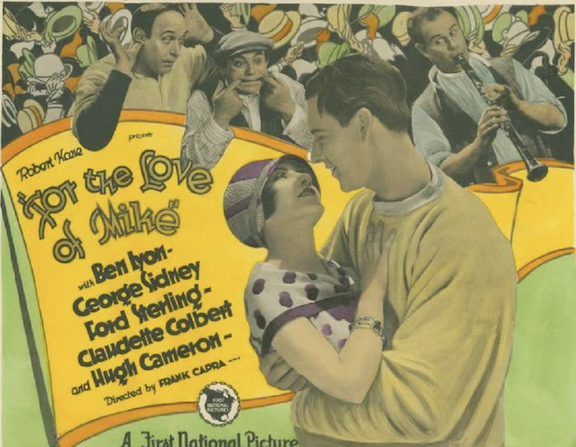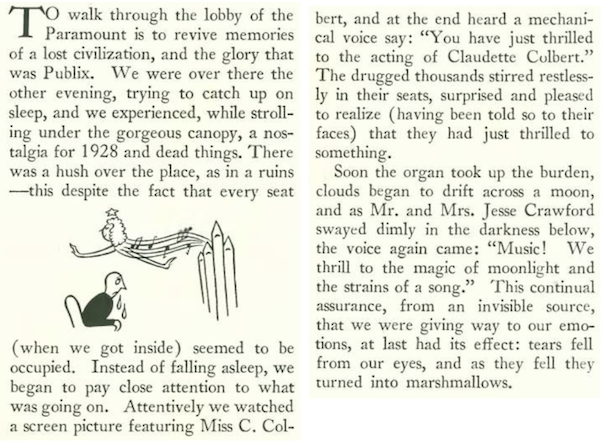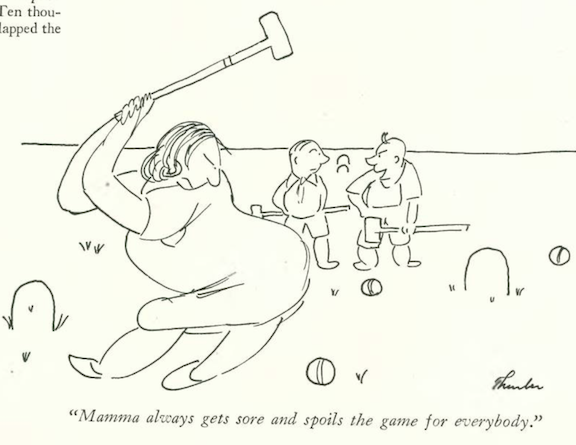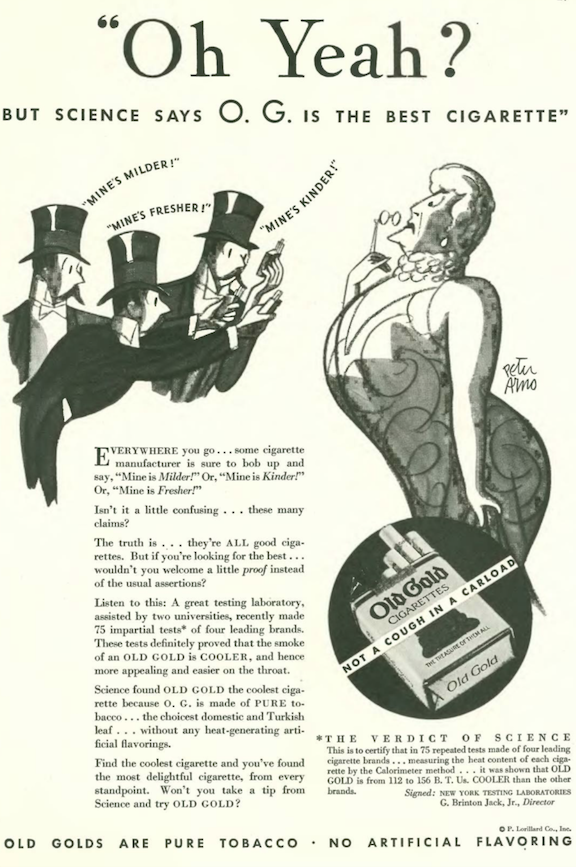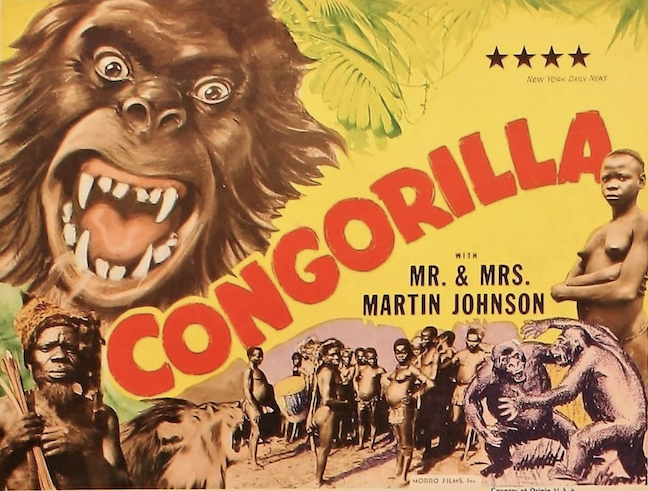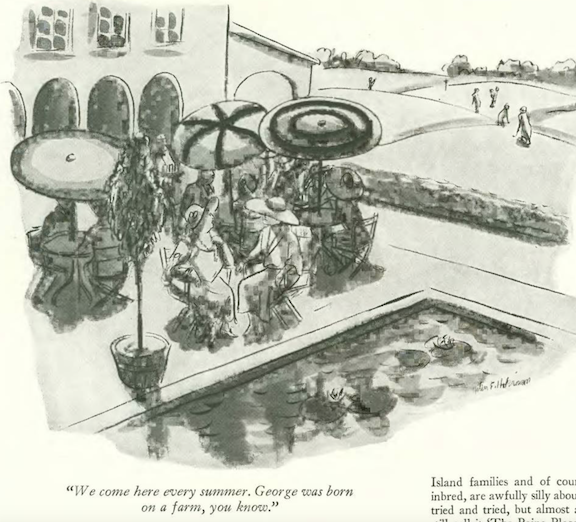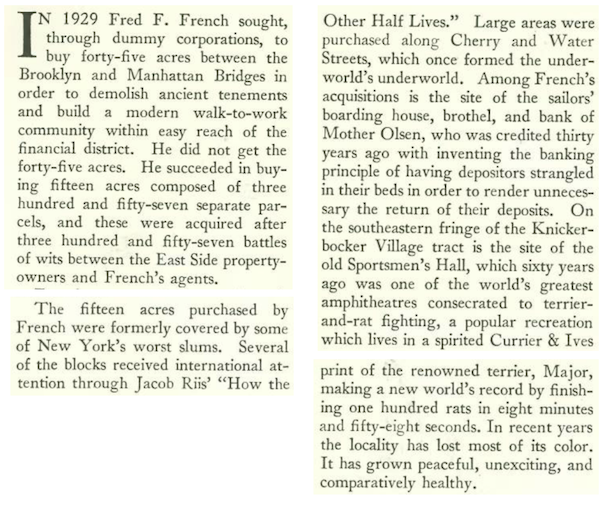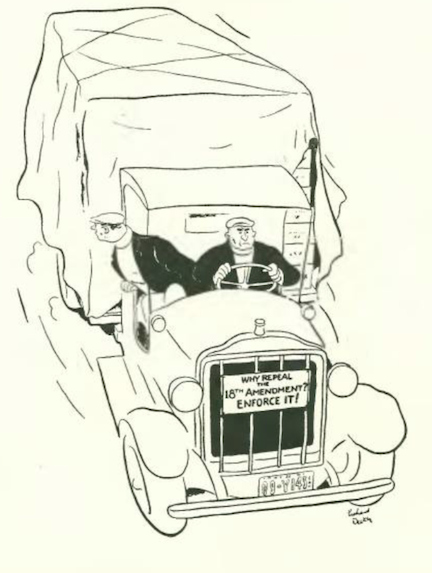Above: Former Governor Alfred E. Smith points out the sights of the city to Governor Franklin D. Roosevelt from an Empire State Building observation floor on May 1, 1931. (Empire State Realty Trust)
New York Governor Al Smith and the man who succeeded him in that office, Franklin D. Roosevelt, were both Democrats, but when it came to personalities, they were more like oil and water.

A popular governor (1923 to 1928) from working-class roots, Smith thought he could ride that popularity to the White House, but lost to Herbert Hoover in the ’28 presidential elections. He then hoped to be of some use to his gubernatorial successor FDR, but was more or less snubbed by his fellow Democrat – the regal Roosevelt branded himself as a reformer, and didn’t want Smith’s deep Irish Tammany connections to sully that reputation. Smith did find something to do, however, by becoming president of the corporation that built and operated the Empire State Building.

But after the building’s dedication, Smith took another shot at the White House, this time against Roosevelt in the 1932 Democratic presidential primaries. Smith lost the nomination in a bitter convention battle (he eventually endorsed FDR) but kept busy with another venture: editor of the New Outlook magazine…

…which Smith used as a platform to attack his Democratic rival, and, particularly the New Deal policies following Roosevelt’s successful election to the White House. The election was still a couple months away when E.B. White offered these observations about Smith’s new publishing venture:
…Otto Soglow provided this interpretation of Smith’s new job for “Notes and Comment”…
…while other cartoonists made hay over the Roosevelt/Smith rift:

* * *
Nein Bitte
The German artist George Grosz (1893–1959) was perhaps best known for his bitter caricatures and paintings of Berlin’s Weimar years (roughly 1918 to 1933). In June 1932 he accepted an invitation to teach the summer semester at the Art Students League of New York, then briefly returned to Germany before emigrating to the U.S. with his family in January 1933.

* * *
From Our Advertisers
Back in the day when it was still acceptable to drape dead animals around your neck, Gunther Furs offered these ensembles…the coat at left would cost the equivalent of $17,000 today…
…this 1932 photo gives us some idea of how these coats might have appeared…

…perhaps you could wear one of the coats on a breezy day atop Ten Park Avenue…even this posh address felt the need to emphasize its affordability in those depressed times…also note the advertisement at the bottom for a “Milk Farm”…
…the 1930s saw a weight-loss fad that included dairy as a dietary must; one such “milk farm” was the Rose Dor Farm just up the Hudson from New York…

…back to our apartment hunting, The Lombardy was built in the 1920s by William Randolph Hearst for his movie star mistress Marion Davies…unlike Ten Park Avenue, it wasn’t on Park, but the ad makes sure to note its close proximity, and the illustration assured that the clientele were sufficiently dour in their good taste…also note the ad for the Fraternity Clubs Building, which was going co-ed…
…The New York Times reported in August 1932 that “the ninety rooms of the fourth and fifth floors of the building have been redecorated and furnished with a ‘feminine touch'”…

…time to step out for a smoke with another Old Gold ad illustrated by Peter Arno…
…in contrast to Arno’s defiant vamp, this woman enjoyed her smoke with a sense of ease…
…if you’ve never heard of Richard Himber, he made a name for himself in New York beginning with his days in vaudeville and Tin Pan Alley. Described in a Wikipedia entry as “American bandleader, composer, violinist, magician and practical joker,” Himber ran a band-booking agency before forming an orchestra of his own at the Essex House that performed over NBC Radio…
…our last ad is a most unlikely one from the Sterling Engine Company of Buffalo, New York, definitely an outlier among the other New Yorker ads…
…our cartoonists include Perry Barlow on the campaign trail…
…along with Alain (Daniel Brustlein)…
…Carl Rose gave us two zoo animals who were less than keen to become movie stars…
…and we close with William Steig, who showed us one of his Small Fry coming of age…
…but before we close, here’s a brief nod to Halloween, 1932, and some popular costumes for the grown-ups, including a Minnie Mouse costume that is unintentionally creepy…
…Hollywood liked to get in on the fun by releasing studio “pin-ups” featuring stars of the day…

Next Time: The Red House…


















